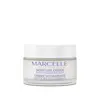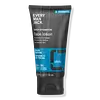What's inside
What's inside
 Key Ingredients
Key Ingredients

 Benefits
Benefits

 Concerns
Concerns

 Ingredients Side-by-side
Ingredients Side-by-side

Water
Skin ConditioningGlycerin
HumectantPropanediol
SolventDicaprylyl Carbonate
EmollientButyrospermum Parkii Butter
Skin ConditioningC15-19 Alkane
SolventGlyceryl Stearate
EmollientJojoba Esters
EmollientCetearyl Olivate
Cetyl Alcohol
EmollientNiacinamide
SmoothingSodium Hyaluronate
Humectant1,2-Hexanediol
Skin ConditioningSodium Polyacrylate
AbsorbentArginine
MaskingSorbitan Olivate
EmulsifyingDimethicone
EmollientLactic Acid
BufferingSodium Gluconate
Skin ConditioningTocopheryl Acetate
AntioxidantCaprylhydroxamic Acid
Tocopherol
AntioxidantWater, Glycerin, Propanediol, Dicaprylyl Carbonate, Butyrospermum Parkii Butter, C15-19 Alkane, Glyceryl Stearate, Jojoba Esters, Cetearyl Olivate, Cetyl Alcohol, Niacinamide, Sodium Hyaluronate, 1,2-Hexanediol, Sodium Polyacrylate, Arginine, Sorbitan Olivate, Dimethicone, Lactic Acid, Sodium Gluconate, Tocopheryl Acetate, Caprylhydroxamic Acid, Tocopherol
Water
Skin ConditioningCaprylic/Capric Triglyceride
MaskingPropanediol
SolventCetyl Alcohol
EmollientSilica
AbrasiveCetearyl Olivate
Sorbitan Olivate
EmulsifyingNiacinamide
SmoothingOlea Europaea Fruit Oil
MaskingGlyceryl Stearate
EmollientSodium Hyaluronate
HumectantAloe Barbadensis Leaf Juice
Skin ConditioningHelianthus Annuus Seed Oil
EmollientRosmarinus Officinalis Leaf Extract
AntimicrobialDisodium Cetearyl Sulfosuccinate
CleansingSodium Gluconate
Skin ConditioningEthylhexylglycerin
Skin ConditioningMethylheptylglycerin
HumectantCitric Acid
BufferingXanthan Gum
EmulsifyingPhenoxyethanol
PreservativeWater, Caprylic/Capric Triglyceride, Propanediol, Cetyl Alcohol, Silica, Cetearyl Olivate, Sorbitan Olivate, Niacinamide, Olea Europaea Fruit Oil, Glyceryl Stearate, Sodium Hyaluronate, Aloe Barbadensis Leaf Juice, Helianthus Annuus Seed Oil, Rosmarinus Officinalis Leaf Extract, Disodium Cetearyl Sulfosuccinate, Sodium Gluconate, Ethylhexylglycerin, Methylheptylglycerin, Citric Acid, Xanthan Gum, Phenoxyethanol
 Reviews
Reviews

Ingredients Explained
These ingredients are found in both products.
Ingredients higher up in an ingredient list are typically present in a larger amount.
Cetearyl Olivate is an emulsifier and texture enhancer. It is derived from the fatty acids of olive oil and Cetearyl alcohol, and is biodegradable.
As an emulsifier, it is used to prevent oils and waters from separating. It can also
Manufacturers use the name Olivem 1000. This ingredient has been found to preserve the natural microbiome of skin. Having a healthy microbiome helps keep our skin healthy and protects against harmful bacteria. This ingredient is grouped with Sorbitan Olivate under the name Olivem 1000.
Learn more about Cetearyl OlivateCetyl Alcohol is a fatty alcohol. Fatty Alcohols are most often used as an emollient or to thicken a product.
Its main roles are:
Though it has "alcohol" in the name, it is not related to denatured alcohol or ethyl alcohol.
The FDA allows products labeled "alcohol-free" to have fatty alcohols.
Learn more about Cetyl AlcoholGlyceryl Stearate is a mix of glycerin and stearic acid.
It is used to stabilize the mixing of water and oil ingredients. By preventing these ingredients from separating, it can help elongate shelf life. It can also help thicken the product's texture.
As an emollient, it helps soften skin and supports barrier-replenishing ingredients.
In cosmetics, Glyceryl Stearate is often made from vegetable oils or synthetically produced.
This ingredient may not be fungal-acne safe
Fun fact: The human body also creates Glyceryl Stearate naturally.
Learn more about Glyceryl StearateNiacinamide is a multitasking form of vitamin B3 that strengthens the skin barrier, reduces pores and dark spots, regulates oil, and improves signs of aging.
And the best part? It's gentle and well-tolerated by most skin types, including sensitive and reactive skin.
You might have heard of "niacin flush", or the reddening of skin that causes itchiness. Niacinamide has not been found to cause this.
In very rare cases, some individuals may not be able to tolerate niacinamide at all or experience an allergic reaction to it.
If you are experiencing flaking, irritation, and dryness with this ingredient, be sure to double check all your products as this ingredient can be found in all categories of skincare.
When incorporating niacinamide into your routine, look out for concentration amounts. Typically, 5% niacinamide provides benefits such as fading dark spots. However, if you have sensitive skin, it is better to begin with a smaller concentration.
When you apply niacinamide to your skin, your body converts it into nicotinamide adenine dinucleotide (NAD). NAD is an essential coenzyme that is already found in your cells as "fuel" and powers countless biological processes.
In your skin, NAD helps repair cell damage, produce new healthy cells, support collagen production, strengthen the skin barrier, and fight environmental stressors (like UV and pollution).
Our natural NAD levels start to decline with age, leading to slower skin repair, visible aging, and a weaker skin barrier. By providing your skin niacinamide, you're recharging your skin's NAD levels. This leads to stronger, healthier, and younger looking skin.
Another name for vitamin B3 is nicotinamide. This vitamin is water-soluble and our bodies don't store it. We obtain Vitamin B3 from either food or skincare. Meat, fish, wheat, yeast, and leafy greens contain vitamin B3.
The type of niacinamide used in skincare is synthetically created.
Learn more about NiacinamidePropanediol is an all-star ingredient. It softens, hydrates, and smooths the skin.
It’s often used to:
Propanediol is not likely to cause sensitivity and considered safe to use. It is derived from corn or petroleum with a clear color and no scent.
Learn more about PropanediolThis is the synthetic salt of gluconic acid, a form of PHA and mild exfoliant.
It is mainly used to stabilize oil and butter formulations from going bad. Sodium gluconate is a humectant, pH regulator, and chelating agent.
Chelating agents help neutralize unwanted metals from affecting the formulation.
Sodium gluconate is water-soluble.
Learn more about Sodium GluconateSodium Hyaluronate is hyaluronic acid's salt form. It is commonly derived from the sodium salt of hyaluronic acid.
Like hyaluronic acid, it is great at holding water and acts as a humectant. This makes it a great skin hydrating ingredient.
Sodium Hyaluronate is naturally occurring in our bodies and is mostly found in eye fluid and joints.
These are some other common types of Hyaluronic Acid:
Learn more about Sodium HyaluronateSorbitan Olivate is created from the fatty acids in olive oil and sorbitol.
This ingredient is an oil in water emulsifier. It helps stabilize a product by preventing oils and waters from separating. Sorbitan Olivate also helps hydrate the skin.
Manufacturers sell sorbitan olivate under the name OliveM 1000. OliveM 1000 a multifunctional ingredient. It is self-emulsifying. According to a manufacturer, OliveM 1000 does not disrupt natural skin biome.
Due to its olive oil base, this ingredient may not be fungal-acne safe.
Learn more about Sorbitan OlivateWater. It's the most common cosmetic ingredient of all. You'll usually see it at the top of ingredient lists, meaning that it makes up the largest part of the product.
So why is it so popular? Water most often acts as a solvent - this means that it helps dissolve other ingredients into the formulation.
You'll also recognize water as that liquid we all need to stay alive. If you see this, drink a glass of water. Stay hydrated!
Learn more about Water